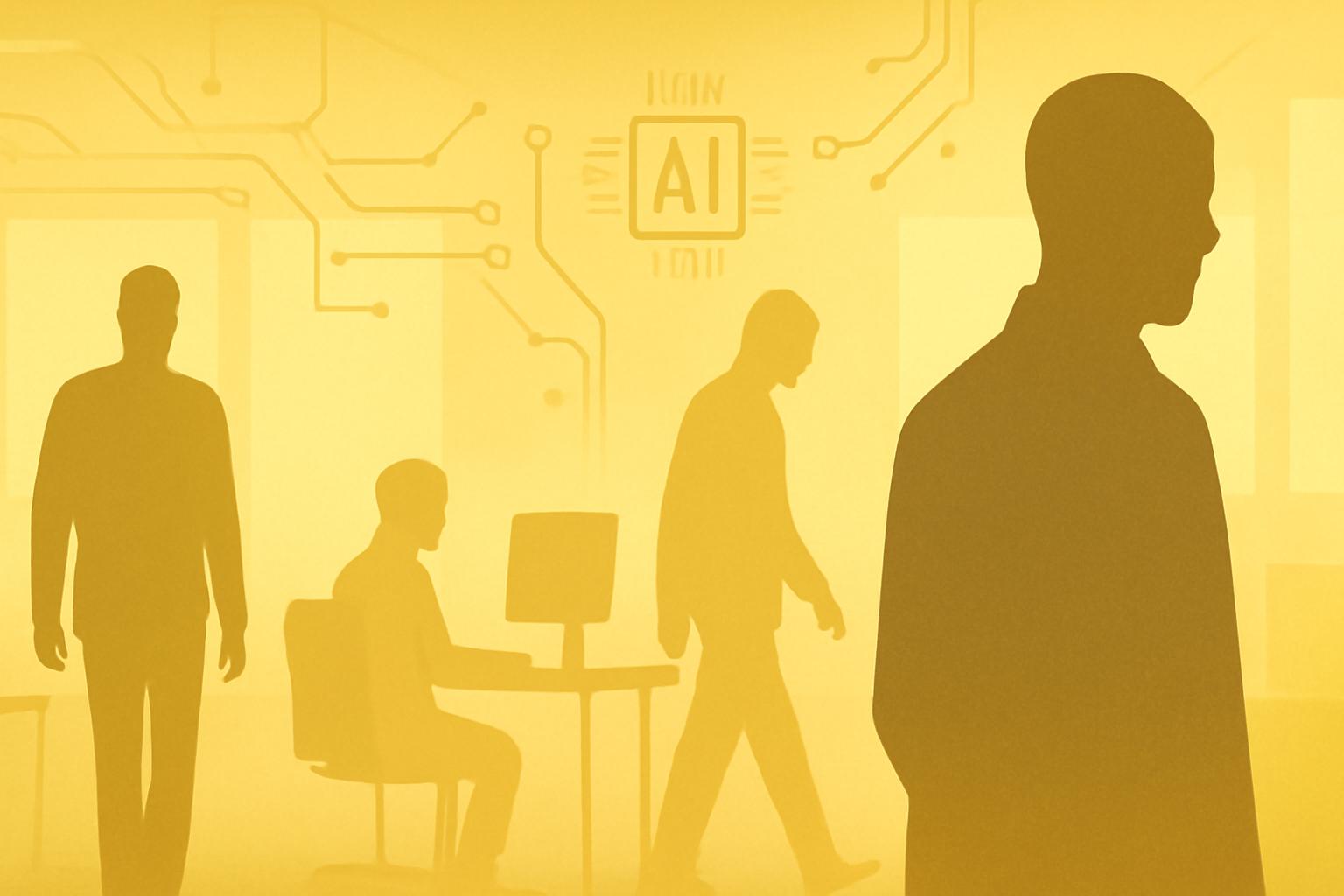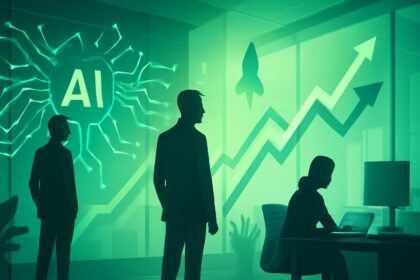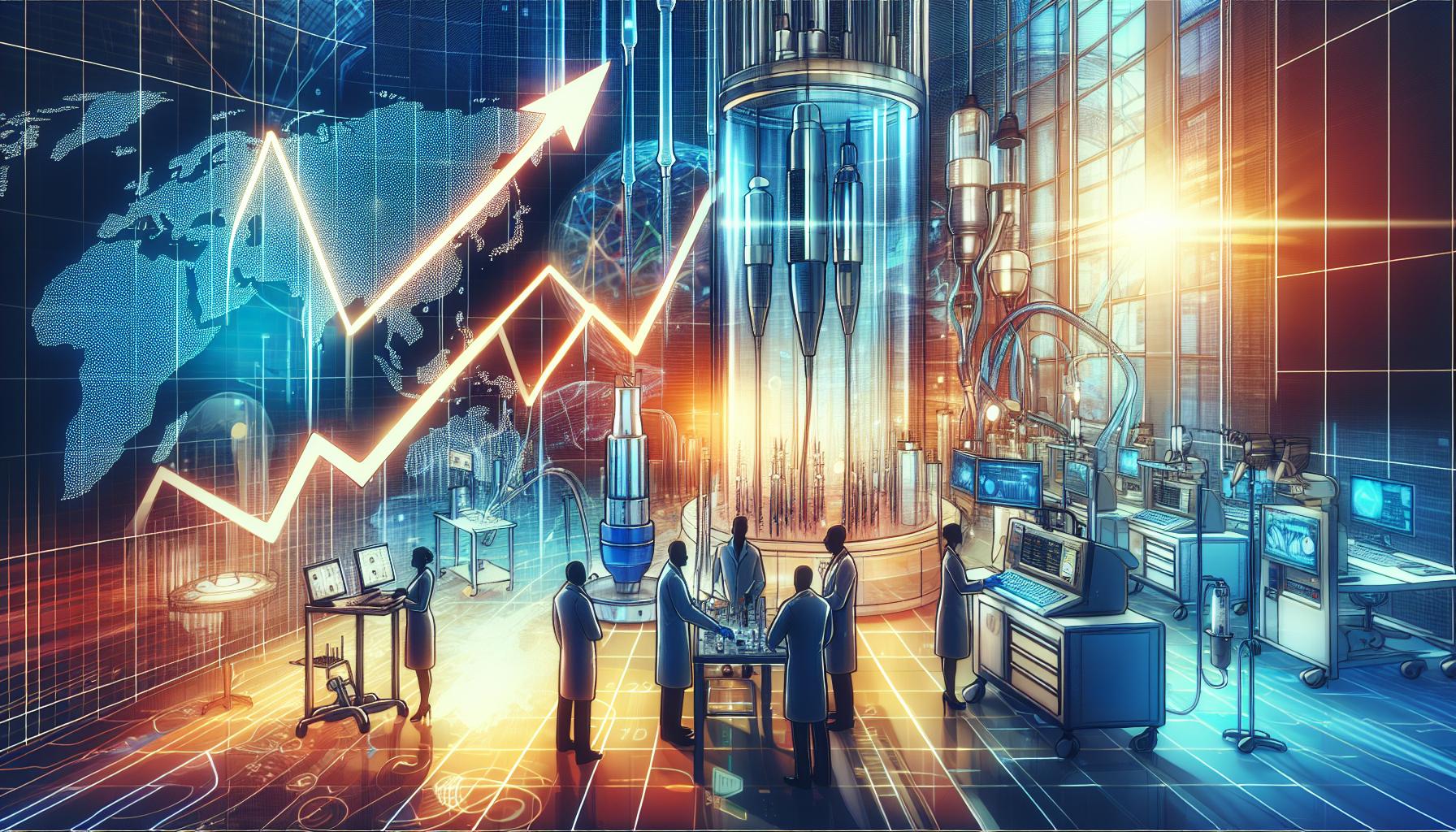“The wave of layoffs underscores the need for workforce adaptability as the industry evolves rapidly toward AI-driven innovation.”
Industry AnalystGoing forward, the tech sector is expected to balance cost-cutting measures with strategic hiring in growth areas, particularly AI, cloud computing, and cybersecurity.
FinOracleAI — Market View
The 2025 tech layoffs reflect a complex interplay of economic pressures and technological transformation. While the immediate impact is a contraction in workforce numbers, the longer-term effect will likely be a redefined tech labor market emphasizing AI and automation capabilities.
- Opportunities: Enhanced productivity through AI-driven tools; new roles in AI development and oversight; potential for innovation in automation and cloud services.
- Risks: Talent drain and loss of institutional knowledge; social and economic disruption for displaced workers; possible slowdown in some innovation sectors due to reduced human capital.
Impact: The layoffs present a mixed market signal—short-term contraction with potential for medium-term transformation. Stakeholders should monitor hiring trends in AI and emerging tech sectors closely, as these will be critical indicators of industry health and innovation capacity.
While these layoffs are part of broader corporate strategies, they have significant human consequences. Thousands of skilled professionals face job insecurity amid shifting industry demands. However, many companies continue to invest selectively in AI and emerging technologies, indicating a reallocation rather than an outright reduction in tech talent.
“The wave of layoffs underscores the need for workforce adaptability as the industry evolves rapidly toward AI-driven innovation.”
Industry AnalystGoing forward, the tech sector is expected to balance cost-cutting measures with strategic hiring in growth areas, particularly AI, cloud computing, and cybersecurity.
FinOracleAI — Market View
The 2025 tech layoffs reflect a complex interplay of economic pressures and technological transformation. While the immediate impact is a contraction in workforce numbers, the longer-term effect will likely be a redefined tech labor market emphasizing AI and automation capabilities.
- Opportunities: Enhanced productivity through AI-driven tools; new roles in AI development and oversight; potential for innovation in automation and cloud services.
- Risks: Talent drain and loss of institutional knowledge; social and economic disruption for displaced workers; possible slowdown in some innovation sectors due to reduced human capital.
Impact: The layoffs present a mixed market signal—short-term contraction with potential for medium-term transformation. Stakeholders should monitor hiring trends in AI and emerging tech sectors closely, as these will be critical indicators of industry health and innovation capacity.
“The wave of layoffs underscores the need for workforce adaptability as the industry evolves rapidly toward AI-driven innovation.”
Industry AnalystGoing forward, the tech sector is expected to balance cost-cutting measures with strategic hiring in growth areas, particularly AI, cloud computing, and cybersecurity.
FinOracleAI — Market View
The 2025 tech layoffs reflect a complex interplay of economic pressures and technological transformation. While the immediate impact is a contraction in workforce numbers, the longer-term effect will likely be a redefined tech labor market emphasizing AI and automation capabilities.
- Opportunities: Enhanced productivity through AI-driven tools; new roles in AI development and oversight; potential for innovation in automation and cloud services.
- Risks: Talent drain and loss of institutional knowledge; social and economic disruption for displaced workers; possible slowdown in some innovation sectors due to reduced human capital.
Impact: The layoffs present a mixed market signal—short-term contraction with potential for medium-term transformation. Stakeholders should monitor hiring trends in AI and emerging tech sectors closely, as these will be critical indicators of industry health and innovation capacity.
While these layoffs are part of broader corporate strategies, they have significant human consequences. Thousands of skilled professionals face job insecurity amid shifting industry demands. However, many companies continue to invest selectively in AI and emerging technologies, indicating a reallocation rather than an outright reduction in tech talent.
“The wave of layoffs underscores the need for workforce adaptability as the industry evolves rapidly toward AI-driven innovation.”
Industry AnalystGoing forward, the tech sector is expected to balance cost-cutting measures with strategic hiring in growth areas, particularly AI, cloud computing, and cybersecurity.
FinOracleAI — Market View
The 2025 tech layoffs reflect a complex interplay of economic pressures and technological transformation. While the immediate impact is a contraction in workforce numbers, the longer-term effect will likely be a redefined tech labor market emphasizing AI and automation capabilities.
- Opportunities: Enhanced productivity through AI-driven tools; new roles in AI development and oversight; potential for innovation in automation and cloud services.
- Risks: Talent drain and loss of institutional knowledge; social and economic disruption for displaced workers; possible slowdown in some innovation sectors due to reduced human capital.
Impact: The layoffs present a mixed market signal—short-term contraction with potential for medium-term transformation. Stakeholders should monitor hiring trends in AI and emerging tech sectors closely, as these will be critical indicators of industry health and innovation capacity.
While these layoffs are part of broader corporate strategies, they have significant human consequences. Thousands of skilled professionals face job insecurity amid shifting industry demands. However, many companies continue to invest selectively in AI and emerging technologies, indicating a reallocation rather than an outright reduction in tech talent.
“The wave of layoffs underscores the need for workforce adaptability as the industry evolves rapidly toward AI-driven innovation.”
Industry AnalystGoing forward, the tech sector is expected to balance cost-cutting measures with strategic hiring in growth areas, particularly AI, cloud computing, and cybersecurity.
FinOracleAI — Market View
The 2025 tech layoffs reflect a complex interplay of economic pressures and technological transformation. While the immediate impact is a contraction in workforce numbers, the longer-term effect will likely be a redefined tech labor market emphasizing AI and automation capabilities.
- Opportunities: Enhanced productivity through AI-driven tools; new roles in AI development and oversight; potential for innovation in automation and cloud services.
- Risks: Talent drain and loss of institutional knowledge; social and economic disruption for displaced workers; possible slowdown in some innovation sectors due to reduced human capital.
Impact: The layoffs present a mixed market signal—short-term contraction with potential for medium-term transformation. Stakeholders should monitor hiring trends in AI and emerging tech sectors closely, as these will be critical indicators of industry health and innovation capacity.
While these layoffs are part of broader corporate strategies, they have significant human consequences. Thousands of skilled professionals face job insecurity amid shifting industry demands. However, many companies continue to invest selectively in AI and emerging technologies, indicating a reallocation rather than an outright reduction in tech talent.
“The wave of layoffs underscores the need for workforce adaptability as the industry evolves rapidly toward AI-driven innovation.”
Industry AnalystGoing forward, the tech sector is expected to balance cost-cutting measures with strategic hiring in growth areas, particularly AI, cloud computing, and cybersecurity.
FinOracleAI — Market View
The 2025 tech layoffs reflect a complex interplay of economic pressures and technological transformation. While the immediate impact is a contraction in workforce numbers, the longer-term effect will likely be a redefined tech labor market emphasizing AI and automation capabilities.
- Opportunities: Enhanced productivity through AI-driven tools; new roles in AI development and oversight; potential for innovation in automation and cloud services.
- Risks: Talent drain and loss of institutional knowledge; social and economic disruption for displaced workers; possible slowdown in some innovation sectors due to reduced human capital.
Impact: The layoffs present a mixed market signal—short-term contraction with potential for medium-term transformation. Stakeholders should monitor hiring trends in AI and emerging tech sectors closely, as these will be critical indicators of industry health and innovation capacity.
“The wave of layoffs underscores the need for workforce adaptability as the industry evolves rapidly toward AI-driven innovation.”
Industry AnalystGoing forward, the tech sector is expected to balance cost-cutting measures with strategic hiring in growth areas, particularly AI, cloud computing, and cybersecurity.
FinOracleAI — Market View
The 2025 tech layoffs reflect a complex interplay of economic pressures and technological transformation. While the immediate impact is a contraction in workforce numbers, the longer-term effect will likely be a redefined tech labor market emphasizing AI and automation capabilities.
- Opportunities: Enhanced productivity through AI-driven tools; new roles in AI development and oversight; potential for innovation in automation and cloud services.
- Risks: Talent drain and loss of institutional knowledge; social and economic disruption for displaced workers; possible slowdown in some innovation sectors due to reduced human capital.
Impact: The layoffs present a mixed market signal—short-term contraction with potential for medium-term transformation. Stakeholders should monitor hiring trends in AI and emerging tech sectors closely, as these will be critical indicators of industry health and innovation capacity.
While these layoffs are part of broader corporate strategies, they have significant human consequences. Thousands of skilled professionals face job insecurity amid shifting industry demands. However, many companies continue to invest selectively in AI and emerging technologies, indicating a reallocation rather than an outright reduction in tech talent.
“The wave of layoffs underscores the need for workforce adaptability as the industry evolves rapidly toward AI-driven innovation.”
Industry AnalystGoing forward, the tech sector is expected to balance cost-cutting measures with strategic hiring in growth areas, particularly AI, cloud computing, and cybersecurity.
FinOracleAI — Market View
The 2025 tech layoffs reflect a complex interplay of economic pressures and technological transformation. While the immediate impact is a contraction in workforce numbers, the longer-term effect will likely be a redefined tech labor market emphasizing AI and automation capabilities.
- Opportunities: Enhanced productivity through AI-driven tools; new roles in AI development and oversight; potential for innovation in automation and cloud services.
- Risks: Talent drain and loss of institutional knowledge; social and economic disruption for displaced workers; possible slowdown in some innovation sectors due to reduced human capital.
Impact: The layoffs present a mixed market signal—short-term contraction with potential for medium-term transformation. Stakeholders should monitor hiring trends in AI and emerging tech sectors closely, as these will be critical indicators of industry health and innovation capacity.
While these layoffs are part of broader corporate strategies, they have significant human consequences. Thousands of skilled professionals face job insecurity amid shifting industry demands. However, many companies continue to invest selectively in AI and emerging technologies, indicating a reallocation rather than an outright reduction in tech talent.
“The wave of layoffs underscores the need for workforce adaptability as the industry evolves rapidly toward AI-driven innovation.”
Industry AnalystGoing forward, the tech sector is expected to balance cost-cutting measures with strategic hiring in growth areas, particularly AI, cloud computing, and cybersecurity.
FinOracleAI — Market View
The 2025 tech layoffs reflect a complex interplay of economic pressures and technological transformation. While the immediate impact is a contraction in workforce numbers, the longer-term effect will likely be a redefined tech labor market emphasizing AI and automation capabilities.
- Opportunities: Enhanced productivity through AI-driven tools; new roles in AI development and oversight; potential for innovation in automation and cloud services.
- Risks: Talent drain and loss of institutional knowledge; social and economic disruption for displaced workers; possible slowdown in some innovation sectors due to reduced human capital.
Impact: The layoffs present a mixed market signal—short-term contraction with potential for medium-term transformation. Stakeholders should monitor hiring trends in AI and emerging tech sectors closely, as these will be critical indicators of industry health and innovation capacity.
Overview of Tech Layoffs in 2025
The technology sector continues to experience a wave of layoffs in 2025, following a historic year in 2024 when over 150,000 jobs were eliminated across 549 companies, according to independent data from Layoffs.fyi. This year alone, more than 22,000 workers have been affected, with February seeing the highest monthly cuts at over 16,000.
These workforce reductions span a diverse range of tech companies, from startups to established giants, reflecting a broader industry trend driven by economic headwinds, automation, and strategic pivots toward artificial intelligence (AI) and operational efficiency.
Monthly Layoff Trends in 2025
- January: 2,403 layoffs
- February: 16,234 layoffs
- March: 8,834 layoffs
- April: Over 24,500 layoffs
- May: 10,397 layoffs
- June: 1,606 layoffs
- July: 16,142 layoffs
- August: 6,002 layoffs
These fluctuations illustrate ongoing volatility as companies adjust to market conditions and technological shifts, particularly the increasing integration of AI and automation.
Notable Company Layoffs by Month
September 2025
- XAI: Cut approximately 500 data annotation roles amid strategic shift to specialist AI roles.
- Rivian: Laid off 200 employees (1.5% of staff) ahead of federal EV tax credit expiration.
- Oracle: Reduced workforce by 363 jobs across Seattle and San Francisco offices.
- Salesforce: Announced 262 layoffs at San Francisco HQ, continuing recent workforce trimming.
August 2025
- Cisco: Eliminated 221 positions across multiple California offices.
- Restaurant365: Cut 100 employees (9% of workforce) following growth shortfall.
- Oracle: Additional layoffs totaling 262 employees planned across several sites.
- F5 Networks: Cut 106 positions, mainly senior engineers and managers.
- Peloton: Reduced workforce by 6% in sixth round of layoffs in just over a year.
- Kaltura: Cut 10% of workforce (~70 employees) to reduce expenses.
- Yotpo: Laid off 200 employees (34% of workforce), shutting down email and SMS marketing operations.
- Windsurf: Cut 30 employees and offered buyouts to remaining staff post-acquisition.
- Wondery (Amazon): 100 job cuts amid audio division restructuring.
July 2025
- Atlassian: Cut 150 roles in customer service due to platform enhancements reducing support needs.
- Consensys: Laid off 7% of workforce (47 employees) amid profitability push.
- Zeen: Shut down operations, impacting entire workforce.
- Scale AI: Reduced workforce by 14% (~200 employees) and cut 500 contractors.
- Lenovo: Planned over 100 U.S. job cuts (~3% of workforce).
- Intel: Reported layoffs of nearly 2,400 employees in Oregon.
- Indeed + Glassdoor: Combined layoffs of approximately 1,300 employees focusing on AI integration.
- Microsoft: Announced 9,000 layoffs globally, following earlier cuts in 2025.
- Bytedance: Cut 65 employees in Bellevue, Washington.
June 2025
- TomTom: Cut 300 jobs (10% of workforce) amid AI-driven restructuring.
- Rivian: Laid off approximately 140 manufacturing employees.
- Bumble: Reduced workforce by 240 employees (30%) to improve efficiency.
- Klue: Cut 85 employees (40% of workforce).
- Google: Downsized smart TV division by 25% and cut funding by 10% for TV projects.
- Intel: Planned 15-20% layoffs in Foundry division and winding down auto business.
- Playtika: Laid off 90 employees across Israel and Poland.
- Airtime: Cut 25 employees from 58-person team.
- Microsoft: Additional layoffs affecting various roles.
May 2025
- Hims & Hers: Cut 68 employees (4%) unrelated to regulatory impacts.
- Amazon: Laid off approximately 100 employees in devices and services division.
- Microsoft: Reduced workforce by over 6,500 employees (3%).
- Chegg: Planned 248 layoffs (22%) due to declining web traffic.
- Match: Reduced workforce by 13% during reorganization.
- CrowdStrike: Cut 5% of global workforce (500 employees) to improve efficiency.
- General Fusion: Reduced staff by 25%, focusing on fusion energy development.
- Deep Instinct: Cut 20 employees (10%).
- Beam: Shut down operations, laying off approximately 200 employees.
April 2025
- NetApp: Eliminated 700 jobs (6%) amid operational restructuring.
- Electronic Arts: Laid off 300-400 employees to refocus strategic priorities.
- Expedia: Cut 3% of workforce, mainly midlevel product and tech roles.
- Cars24: Reduced workforce by about 200 in product and tech divisions.
- Meta: Cut over 100 employees in Reality Labs division.
- Intel: Announced 21,000 layoffs (20% of workforce) ahead of Q1 earnings.
- GM: Cut 200 employees at electric vehicle manufacturing facilities.
- Zopper: Laid off around 100 employees in multiple rounds.
- Turo: Reduced workforce by 150 following IPO withdrawal.
- Gupshup: Laid off 200 employees to improve profitability.
- Forto: Cut 200 jobs, about one-third of staff.
- Wicresoft: Ceased operations in China, affecting 2,000 employees.
- Five9: Planned 123 layoffs (4%).
- Google: Laid off hundreds in platforms and devices division.
- Microsoft: Considered further layoffs targeting middle managers and non-coders.
- Automattic: Cut 16% of workforce (~270 employees).
- Canva: Laid off 10-12 technical writers.
Key Drivers Behind the Layoffs
The ongoing layoffs in the tech sector are primarily driven by several interrelated factors:
- Economic Uncertainty: Companies are tightening budgets amid global economic headwinds and inflationary pressures.
- Shift to AI and Automation: Increased automation and AI adoption are reshaping workforce needs, reducing demand for certain roles while creating new opportunities.
- Operational Efficiency: Firms are streamlining operations to improve profitability and focus on core business areas.
- Market Realignments: Changes in consumer demand, regulatory environments, and technological priorities are prompting strategic pivots.
- Post-Pandemic Adjustments: The tech workforce expansion during the pandemic is being recalibrated to align with current market realities.
Human Impact and Industry Outlook
The 2025 tech layoffs reflect a complex interplay of economic pressures and technological transformation. While the immediate impact is a contraction in workforce numbers, the longer-term effect will likely be a redefined tech labor market emphasizing AI and automation capabilities.
- Opportunities: Enhanced productivity through AI-driven tools; new roles in AI development and oversight; potential for innovation in automation and cloud services.
- Risks: Talent drain and loss of institutional knowledge; social and economic disruption for displaced workers; possible slowdown in some innovation sectors due to reduced human capital.
Impact: The layoffs present a mixed market signal—short-term contraction with potential for medium-term transformation. Stakeholders should monitor hiring trends in AI and emerging tech sectors closely, as these will be critical indicators of industry health and innovation capacity.
“The wave of layoffs underscores the need for workforce adaptability as the industry evolves rapidly toward AI-driven innovation.”
Industry AnalystGoing forward, the tech sector is expected to balance cost-cutting measures with strategic hiring in growth areas, particularly AI, cloud computing, and cybersecurity.
FinOracleAI — Market View
The 2025 tech layoffs reflect a complex interplay of economic pressures and technological transformation. While the immediate impact is a contraction in workforce numbers, the longer-term effect will likely be a redefined tech labor market emphasizing AI and automation capabilities.
- Opportunities: Enhanced productivity through AI-driven tools; new roles in AI development and oversight; potential for innovation in automation and cloud services.
- Risks: Talent drain and loss of institutional knowledge; social and economic disruption for displaced workers; possible slowdown in some innovation sectors due to reduced human capital.
Impact: The layoffs present a mixed market signal—short-term contraction with potential for medium-term transformation. Stakeholders should monitor hiring trends in AI and emerging tech sectors closely, as these will be critical indicators of industry health and innovation capacity.
While these layoffs are part of broader corporate strategies, they have significant human consequences. Thousands of skilled professionals face job insecurity amid shifting industry demands. However, many companies continue to invest selectively in AI and emerging technologies, indicating a reallocation rather than an outright reduction in tech talent.
“The wave of layoffs underscores the need for workforce adaptability as the industry evolves rapidly toward AI-driven innovation.”
Industry AnalystGoing forward, the tech sector is expected to balance cost-cutting measures with strategic hiring in growth areas, particularly AI, cloud computing, and cybersecurity.
FinOracleAI — Market View
The 2025 tech layoffs reflect a complex interplay of economic pressures and technological transformation. While the immediate impact is a contraction in workforce numbers, the longer-term effect will likely be a redefined tech labor market emphasizing AI and automation capabilities.
- Opportunities: Enhanced productivity through AI-driven tools; new roles in AI development and oversight; potential for innovation in automation and cloud services.
- Risks: Talent drain and loss of institutional knowledge; social and economic disruption for displaced workers; possible slowdown in some innovation sectors due to reduced human capital.
Impact: The layoffs present a mixed market signal—short-term contraction with potential for medium-term transformation. Stakeholders should monitor hiring trends in AI and emerging tech sectors closely, as these will be critical indicators of industry health and innovation capacity.
While these layoffs are part of broader corporate strategies, they have significant human consequences. Thousands of skilled professionals face job insecurity amid shifting industry demands. However, many companies continue to invest selectively in AI and emerging technologies, indicating a reallocation rather than an outright reduction in tech talent.
“The wave of layoffs underscores the need for workforce adaptability as the industry evolves rapidly toward AI-driven innovation.”
Industry AnalystGoing forward, the tech sector is expected to balance cost-cutting measures with strategic hiring in growth areas, particularly AI, cloud computing, and cybersecurity.
FinOracleAI — Market View
The 2025 tech layoffs reflect a complex interplay of economic pressures and technological transformation. While the immediate impact is a contraction in workforce numbers, the longer-term effect will likely be a redefined tech labor market emphasizing AI and automation capabilities.
- Opportunities: Enhanced productivity through AI-driven tools; new roles in AI development and oversight; potential for innovation in automation and cloud services.
- Risks: Talent drain and loss of institutional knowledge; social and economic disruption for displaced workers; possible slowdown in some innovation sectors due to reduced human capital.
Impact: The layoffs present a mixed market signal—short-term contraction with potential for medium-term transformation. Stakeholders should monitor hiring trends in AI and emerging tech sectors closely, as these will be critical indicators of industry health and innovation capacity.













